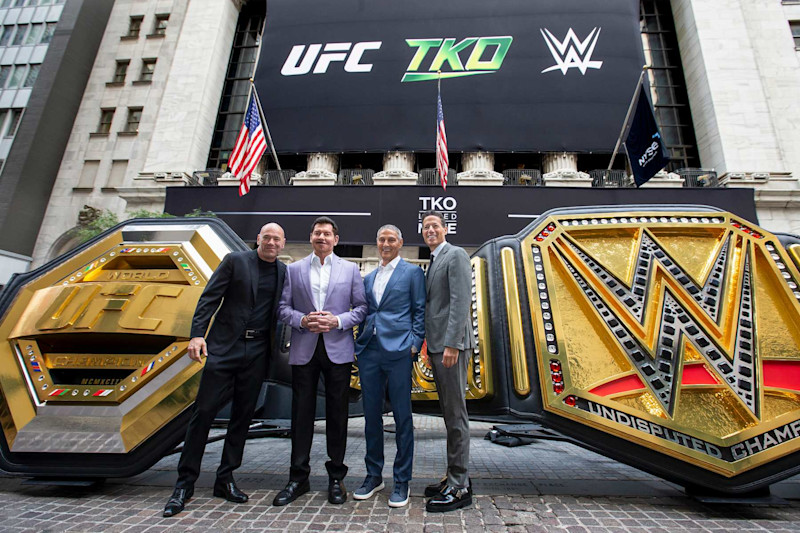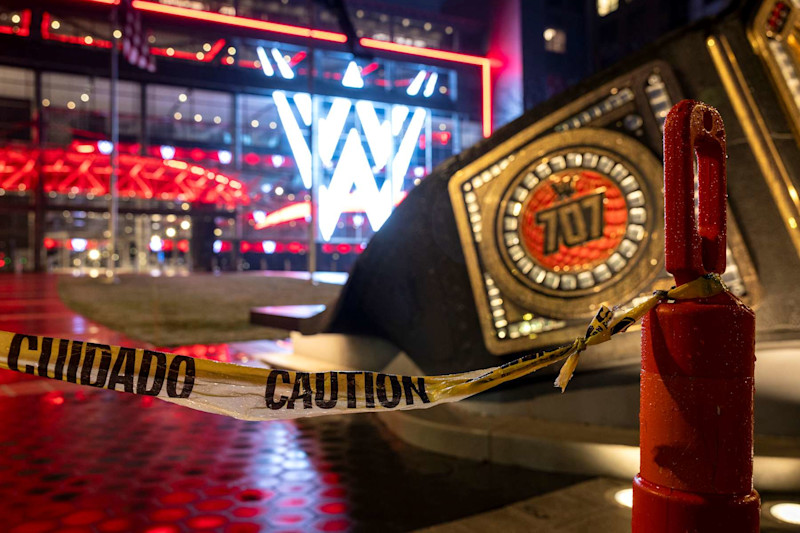Netflix’s Mr. McMahon offers a fragmented look at the most prolific and controversial figure in pro wrestling and an eye-opening glimpse at the man behind the on-screen character.
The six-episode docuseries has quickly taken social media by storm. Many clips and outrageous quotes from its subject and cast of interviewees became conversation starters on the day it premiered.
However, Vince McMahon issued a statement on his X account two days before the documentary series was released.
In his first post of 2024, the former CEO and chairman of WWE took umbrage with its “misleading account” that conflated the Mr. McMahon character with his real-life persona.
In the end, he encouraged viewers to “keep an open mind and remember that there are two sides to every story.”
The series deconstructs his on-air persona and examines how much his creation overlaps with reality. The 79-year-old may be frustrated with the discourse or insights provided, but it’s a fascinating topic nonetheless.
The Man Pulling The Strings
In truth, the finished product is mostly geared toward casual fans with minimal knowledge of WWE’s history, the pro wrestling business and the industry’s seedy underbelly. As such, it doesn’t offer much new information for most longtime viewers.
The series gives us a snapshot of many scandals that rocked the company, including McMahon’s exit and the pending lawsuit filed by Janel Grant. However, it doesn’t cover any of it in-depth, leaving us room to fill in the gaps and raise some questions.
It’s not the hit piece Bruce Prichard makes it out to be, but it doesn’t pull its punches at times, either. Instead, director Chris Smith squeezed a concise timeline and enough information into six 60-minute episodes for you to draw your own conclusions.
McMahon contradicts himself often enough throughout the series to paint the picture of a man with a contentious relationship with the truth, to say the least. Smith doesn’t always offer pushback to his claims or all of the details, but he often illustrates how absurd he could be at his best, and self-centered and callous at his worst.

Michelle Farsi/Zuffa LLC
At several points, the world-renowned promoter and others emphasize that he would do anything to protect the company and his vision of pro wrestling. On the surface, that seems admirable, but it’s often troubling when contextualized.
He was defensive when challenged and attacked when he felt cornered. This could manifest in small incidents such as his infamous 2001 interview with Bob Costas or larger implications about his handling of any scrutiny that threatened to derail his business aspirations.
It certainly proved he would look the other way or enable someone’s behavior if they were useful to him. Even worse, it made it easy to believe his ruthless business tactics weren’t the only thing he could have in common with his notorious heel persona.

John Moore/Getty Images
The Thin Line Between Fantasy and Reality
The most sobering realization about his alleged history of sexual misconduct and the graphic text messages Grant made public is that they were in line with the crude and deplorable role he popularized.
It immediately made anyone who watched WWE at length question whether this was someone who had been telling us who they were all along. After all, Mr. McMahon’s penchant for using his power to objectify and humiliate women became one of his central character traits.
It would be impossible for even his most staunch defenders to ignore the similarities. This makes you wonder if his annoyance with assessments about how close he has grown to his creation is genuine or just the fear of being honest with himself.
During the opening of Episode 4, McMahon revealed that Dr. Jerry Graham was his favorite wrestler. It didn’t take long to see his influence on the villainous authority figure he became during the Attitude era.
As a byproduct of the Montreal Screwjob, fans turned on him and he eventually leaned into it, becoming the most hated heel in the history of the company. His iconic feud with “Stone Cold” Steve Austin changed the trajectory of the industry and propelled WWE into an enduring pop-culture phenomenon.
His transition into a recurring antagonist and transformation into Mr. McMahon was successful, but the allegations he’s facing will forever tarnish it. Many of his actions in character hadn’t aged well anyway, but some seem even more wretched now.
Nevertheless, the 79-year-old maintains that no one really knows him and they confuse him with the man they saw on TV for many years. Still, it’s hard to reconcile this notion with his last words from the docuseries:
“Sometimes the lines of reality or fact and fiction are very blurred in our business. Sometimes what happens is performers start believing in themselves. They start believing in their own character. The individual loses all sense of who they really are personally. They become the character. I’m wondering myself now. Which is the character, and which is me? I guess maybe it’s a blend. I would suggest that one is exaggerated a little bit, but I’m not so sure which one.”
So, is his wrestling persona his real personality dialed up to a cartoonish level? Maybe, the character became an outlet to act out his darkest fantasies and release his pent-up anger and inhibitions.
This could turn into a chicken-or-the-egg theory on whether he got lost in the persona he created or if this is who he has always been. However, there are rape allegations and scandals that predate its introduction after the Montreal Screwjob.
It seems more likely that power corrupts all in the end. The larger WWE grew, the more Mr. McMahon’s character evolved and the man behind it felt more untouchable.
Leave a Reply